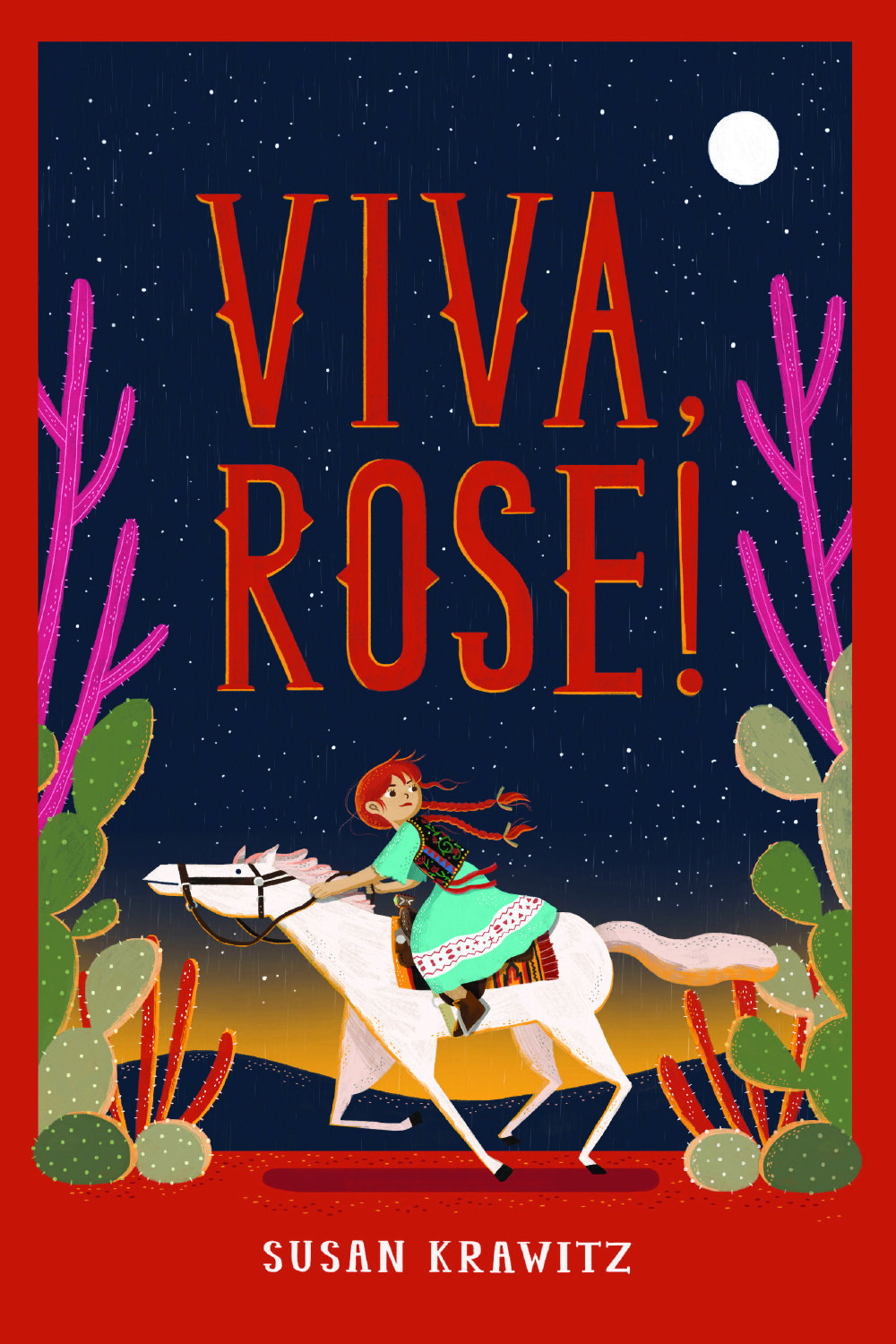Susan Krawitz on Viva, Rose! (1 of 2)
 My cyber-writing-friend and colleague Susan Krawitz celebrates the publication of her middle grade novel Viva Rose! She has a few things to say about family tall tales and their transformation into a fascinating story for young readers.
My cyber-writing-friend and colleague Susan Krawitz celebrates the publication of her middle grade novel Viva Rose! She has a few things to say about family tall tales and their transformation into a fascinating story for young readers.
[Uma] Viva Rose began with a family story—tell me that story.
[Susan] When I was a kid, two of my grandfather’s sisters lived together in a big house in Bensonhurst Brooklyn. It happened to be the same house Moe, Curley and Shemp of the Three Stooges grew up in, but that’s another story altogether. Anyway, when the family would gather there for holidays, my wacky uncle Sheldon liked to tell the kid-crowd stories of my grandfather’s cousins Rose and Abraham Solomon who, in the 1920s and 30s, used to visit from their home in San Antonio Texas. Rose had a lovely singing voice, and always came bearing gifts, and Abe wore full cowboy regalia so he could look like a rube and pool-shark the locals at the billiards hall. Uncle Sheldon said he played chess on horseback—balancing a board? Play-acting a knight? It wasn’t clear. But the wildest tale of all was that he’d joined Pancho Villa’s army during the Mexican Revolution of the early 1900s.

 But were these stories true, or was Uncle Sheldon just entertaining the kids? Great-Aunt Edie did have a Mexican serape draped on a chair in her room, and a sombrero hanging on her wall. At any rate, the tales of our Russian/Jewish immigrant cowboy relative were fun to think about, and the serape and sombrero made me curious. 30 years ago I gave my sister, who’s a historian, a T-shirt with a picture of Pancho Villa’s gang on it, and we joked about which bandido might be our cousin. And then she came back from a trip to San Antonio with a printout of a 1932 newspaper article she’d found in the library’s microfiche that confirmed our family’s Abraham legends and created some new ones as well.
But were these stories true, or was Uncle Sheldon just entertaining the kids? Great-Aunt Edie did have a Mexican serape draped on a chair in her room, and a sombrero hanging on her wall. At any rate, the tales of our Russian/Jewish immigrant cowboy relative were fun to think about, and the serape and sombrero made me curious. 30 years ago I gave my sister, who’s a historian, a T-shirt with a picture of Pancho Villa’s gang on it, and we joked about which bandido might be our cousin. And then she came back from a trip to San Antonio with a printout of a 1932 newspaper article she’d found in the library’s microfiche that confirmed our family’s Abraham legends and created some new ones as well.
[Uma] I happen to know a little something about how you began thinking about turning this history into a book for young readers. Will you tell that story?
[Susan] I can truthfully say that the kernel of this story was the very first one that lodged in my heart and urged me to write it as a novel. I tried it as Abraham’s story first, but that tack didn’t seem to have much steam. And then, Uma, our mutual friend, Audrey Couloumbis sold a pair of middle grade Western novels featuring fabulous female protagonist (The Misadventures of Maude March and Maude March on the Run!). You and I were in an online critique group with Audrey at that time, and she said to us, “Who has an idea for a Western?” Both you and I raised our hands.
[Uma] Well, I kind of raised my hand. You were more enthusiastic.
[Susan] When I came up with a plot idea that made a thirteen-year-old Rose the protagonist, the story engine really began to chug. That happened more years back than I care to admit, but I was so delighted to discover recently that you also grew a book from that conversation, and it will be published right around the same time as Viva, Rose!
[Uma] Not a Western, but set in the western United States, and also historical, yes.
[Susan] Doris Lessing said, "In the writing process, the more a thing cooks, the better."
[Uma] Too true. Thank you, Susan. More in Part 2.